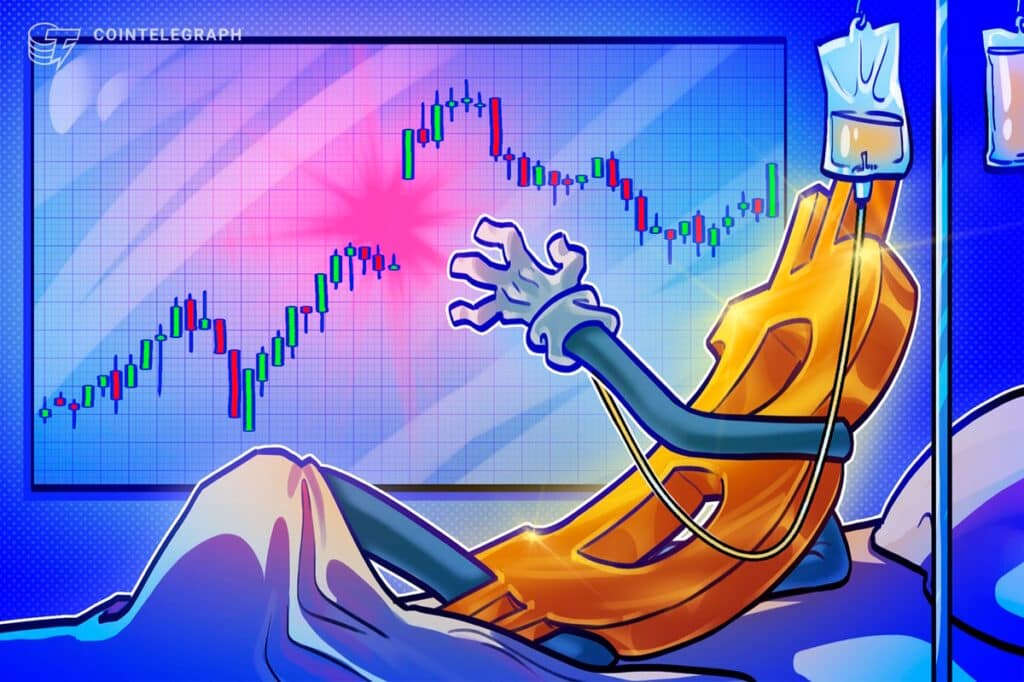Bitcoin price starts flirting with $43k, but derivatives indicate low trader confidence

Bitcoin (BTC) experienced problems as its price struggled to hold the $43,000 support on February 5. The decline came after US Federal Reserve Chairman Jerome Powell pushed back on market expectations for interest rate cuts in the next few months. A lack of interest in the BTC derivatives markets has fueled speculation that it could drop to $40,000.
As US interest rates are high, the price of Bitcoin will decrease
In an interview with 60 Minutes on February 4, the central bank said it needed more confirmation of inflation nearing its 2% target before acting. Powell expressed positive sentiments about the economy, stating that it is in a “good place” and noted that “a three-quarter-point contraction this year” is possible, depending on the behavior of the labor market. However, this contradicts investors' expectations of a rate cut from March.
Adding to Bitcoin's price pressure was a Feb. 5 essay by Minneapolis Fed President Neel Kashkari that suggested it could take time before the monetary authority cuts interest rates. Kashkari cited continued economic growth and low unemployment and argued that “the current monetary policy may not be as promising.”
Concerns among fixed-income investors were raised by the February 3 labor market data, which suggested the Fed's efforts to rein in inflation. January nonfarm payrolls topped estimates by 250,000, with average hourly earnings rising 0.6%, the biggest increase since March 2022. As a result, the two-year US Treasury yield reached 4.48%, the highest level since December 13, which dampened confidence. Possible reduction in interest rates.
Despite the potential long-term benefits associated with Bitcoin's scarcity, traders acknowledge that short-term risk factors, highlighted by crypto enthusiast Blockgraze on the X social network, could limit BTC's upside.
So the short term bitcoin risks are now as follows
> Gox coins can theoretically enter the market at any time.
> Genesis will sell more than one billion GBTC if approved by the court
> Stocks crash and crypto follows
> ETF flows go to zero
We have reached a worse place.
— blockgraze (@blockgraze) February 4, 2024
These risk factors of Mt. Gox exchange, which went bankrupt after a 2014 hack, whose estate is set to distribute 142,000 BTC to creditors. Further negative pressure on Bitcoin prices comes from crypto lender Genesis' failed bid to seek US court approval to divest $1.38 billion of shares in digital currency group Greyscale Bitcoin Trust (GBTC).
Aside from the macroeconomic impact of the Fed's decision to keep interest rates above 5.25%, potential risks to investors' perception come from the influx of Bitcoin spot exchange-traded funds (ETFs). As Blockgraze points out, some people in the market believe that Bitcoin's value will be sustained mainly by earnings from BlackRock's iShares Bitcoin Trust and Fidelity's Wise Origin Bitcoin. By contrast, GBTC experienced the second-highest outflows in January of all ETFs covered by Morningstar – a net $5.7 billion.
Bitcoin derivatives show a neutral demand for profit lengths
Bitcoin monthly futures trade at a small premium to separate markets, indicating that sellers are asking for more money to delay settlement. As a result, BTC futures contracts have to trade at a 5% to 10% annual premium in healthy markets – a situation called contango, which is not unique to crypto markets.
In the last three weeks, Bitcoin traders have approached the market cautiously, the indicator remains below the neutral limit of 10%. Bitcoin futures showed resilience with no negative reaction to a retest of $39,000 support on January 23.
Related: ProShares Accepts Bitcoin ETF Impact on BITO Futures
Analysts should examine the balance between call (buy) and put (sell) options to determine if Bitcoin traders' optimism about the price is waning. The increase in demand for put options indicates that traders are focusing on neutral-to-depression pricing strategies.

Analysis of Bitcoin options data on Deribit from February 2nd to 4th shows increasing demand for puts compared to calls. However, since January 24, the ratio has consistently favored call (buy) options. Therefore, it would be incorrect to conclude that BTC investors are turning bearish.
In essence, Bitcoin derivatives data shows a reluctance to take bullish positions, even though none of the stated risks seem to negate the potential gains from a resurgence in inflation – so there's no indication that Bitcoin's price is weakening towards $40,000.
This article does not contain investment advice or recommendations. Every investment and business activity involves risk, and readers should do their own research when making a decision.











